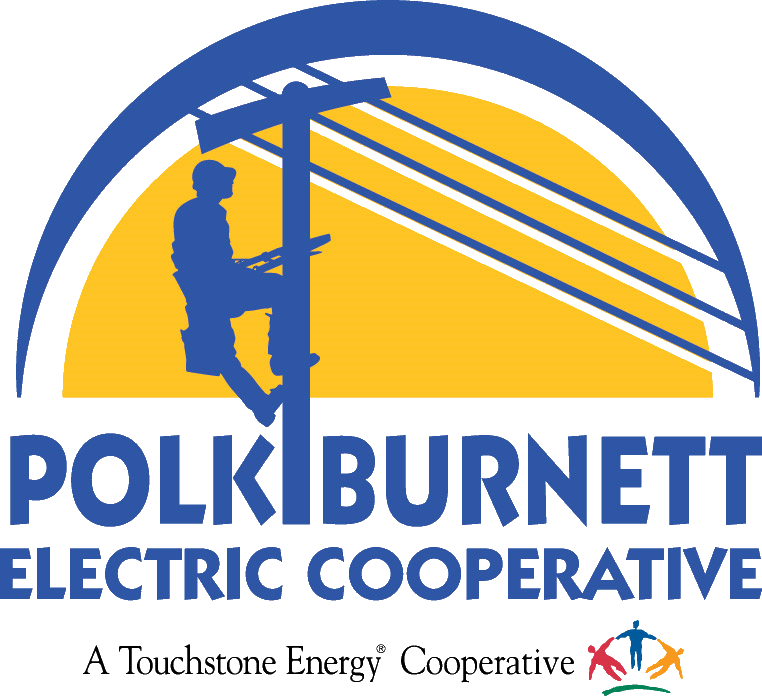 by John Ukura, board director, Polk-Burnett Electric Cooperative
by John Ukura, board director, Polk-Burnett Electric Cooperative
We’ve owed our 2019 Tesla Model 3 for 36 months and driven it nearly 56,000 miles using just over 15,600 kWh of electricity. Owning and driving our electric vehicle has been a very positive experience for myself and my wife. As an engineer, I’m a numbers guy and I’m always interested in investigating new technologies. My wife, who regularly uses it to visit family and friends in the Twin Cities, loves the fact that she never has to stop at a gas station to fuel up. We both appreciate saving money on fuel and maintenance. Plus, EVs are fun to drive!
An EV can be a good choice, but it’s important to do your research. I’m always learning something new. Below are a few lessons I’d like to pass along. I hope my remarks will help clear up some misconceptions you may have about living with an EV:
EVs don’t work for everyone. An EV might NOT be right for you if: you tow or haul large loads (although this may change with the introduction of electric trucks), you travel more than 250 miles per day (more on this below) or you don't have the ability to charge at home overnight. Charging at home is easy and inexpensive. If you don't have the ability to charge at home, EV charging will be more inconvenient, time consuming and expensive.
Most of your EV charging will be done at home, overnight while you’re sleeping, not during peak demand periods. At-home EV charging is normally done using off-peak electricity.
There are three different charging options for EVs:
Level 1 AC charging at 120V adds 3 to 4 miles per hour. This can be done anywhere you find a normal electrical outlet.
Level 2 AC charging at 240V adds 20 to 45 miles per hour. This is available at your home, shopping centers, hotels, apartments and restaurants. It may or may not be free for the driver, with the cost paid by the owner of the charger.
Level 3 DC charging at 400V adds 150 to 400 miles per hour. This is available at public charging stations. It is almost never free.
Unless you’re traveling beyond your vehicle’s full range before returning home, all of your EV charging will take place overnight at your home. Unlike an ICE (internal combustion engine) vehicle, which you only fill when it’s getting low, your EV can be topped off every night and will be fully fueled every morning. You will never need to stop at a gas station again.
Most EV drivers only use public chargers when they are traveling distances greater than their vehicle’s full range in a day. Ask yourself, “How many days per year do you travel more than 250 miles?”
Traveling longer distances with an EV takes some planning. If you aren’t a good planner or don’t like trip planning, an EV is going to present challenges. When traveling longer distances with an EV, your vehicle will notify you when and where you need to stop for charging at public charging stations. You’ll want to plan for these stops in advance.
Long distance, cross-country travel with a Tesla is quite easy using the Tesla Supercharger network. But until the current public DC fast charging network expands, long distance, cross-country travel can be challenging.
Yes, some public charging is free. Free EV charging is normally only Level 1 AC or Level 2 AC charging. A one-hour charging session at a 6kW Level 2 AC charger adds about 20 to 25 miles to the car battery and uses 60 to 90 cents of electricity. Free Level 2 AC charging can be found at some restaurants, hotels and shopping centers when the business owner covers the energy, and the energy bill.
Unfortunately, not every EV can charge at every DC fast charger. There is one universal connector for Level 1 and Level 2 charging, called a J1772. There are three different DC fast charging connectors: Tesla, CCS1 and CHAdeMO (which is being phased out). EV drivers can purchase adaptors.
How and when you recharge your EV when traveling long distances is different from an ICE vehicle. In an ICE vehicle, you make stops only when your fuel level is low (or you need a bathroom break or food or to stretch your legs) and you fill up completely. In an EV, you only want to add enough charge to make it to your next charging stop. You do this because the rate at which you can add range is highest when your battery is low (between 15-20%). As the battery fills, the charging rate decreases. Above 80%, the charging rate is much slower.
The rate of charge for an EV depends upon the current charge state of the battery. When a battery is low, it can be charged very quickly on a DC fast charger. After the battery reaches around 80%, charging slows dramatically to protect the battery cells.
So, what’s the fastest way to travel 650 miles in a day with an EV that gets 300 miles of range? Easy, you depart from home fully charged (100%). You travel 200 miles and arrive at a DC fast charging station with 20% of your battery capacity remaining. You charge up to 80% (this takes between 20 to 30 minutes) and then continue your trip. After traveling another 150 miles, you again reach a DC fast charger with 20% of your battery capacity remaining and again spend 20 to 30 minutes charging back to 80%. After traveling another 150 miles, you charge for 20 to 30 minutes. You complete your day by driving the final 150 miles to your hotel. Total time: 3hrs + 2.5hrs + 2.5hrs + 2.5hrs equals 10.5 hours. If you plan your day around your charging stops (bathroom breaks and eating) you can hide most of your 1.5 hours of charging. If your hotel has a Level 2 AC charger (which is normally free to use), plug in and charge up overnight. In the morning you’re ready to roll again.
An EV drivetrain (battery and motor) that's well-cared for should last for around 1,500 full charging cycles—that’s more than 300,000 miles. Assuming all charging took place at home at a rate of $0.10 per kWh, the lifetime fueling costs for the EV would be $10,000. Contrast that with an ICE vehicle getting 30 mpg and buying gas at $4 per gallon, the fueling costs would be $40,000. In addition, an ICE vehicle would require approximately 50 oil changes and other maintenance costs.
In the future, EVs may help reduce peak demand. How? Using vehicle-to-grid or V2G technology. EVs will charge with off-peak electricity and during peak demand periods can provide the energy they have stored in their batteries back to the grid. Right now, EVs are helping to balance the grid by charging at home overnight when energy demand and costs are low.
Residential EV chargers can be controlled, as part of the utility’s loan management program, just like water heaters. Polk-Burnett offers a charger rebate and off-peak rate in exchange for controlling the charger to operate overnight, when electricity demand and cost are low.
EV owners contribute to the gas tax for the roads we all use. The federal gas tax is $0.184 and the Wisconsin gas tax is $0.309, making the total gas tax $0.493 per gallon of gas. Instead of gas tax, EV owners currently pay an additional $100 for an annual license sticker in Wisconsin, and hybrid owners pay an additional $75.
EVs are negatively affected by cold temperatures. An EV with a 300-mile range will only have 200 miles of usable range on cold winter days. The extra energy is used to keep the occupants and battery warm.
Manufacturers don’t mass produce EVs with 400 to 500 miles of range because most people don’t drive that distance on a daily basis. In addition, an extremely large battery will take a long time to fully charge, will negatively affect efficiency due to the added weight and will substantially increase the purchase price.
I’m NOT in favor of government mandates restricting ICE vehicle sales. I believe that more drivers will make the transition when EVs are cheaper to purchase, charge and maintain. In addition, we’ll need infrastructure improvements to the electric grid and public DC fast chargers.
I invite you to read our October blog, "Why are we talking about EVs," by Polk-Burnett General Manager Steve Stroshane.
Polk-Burnett Electric Cooperative provides safe, reliable electricity to power your home, your electronics and even your transportation. Please contact us if you have questions about EVs and EV charging, 800-421-0283, ext. 595.

